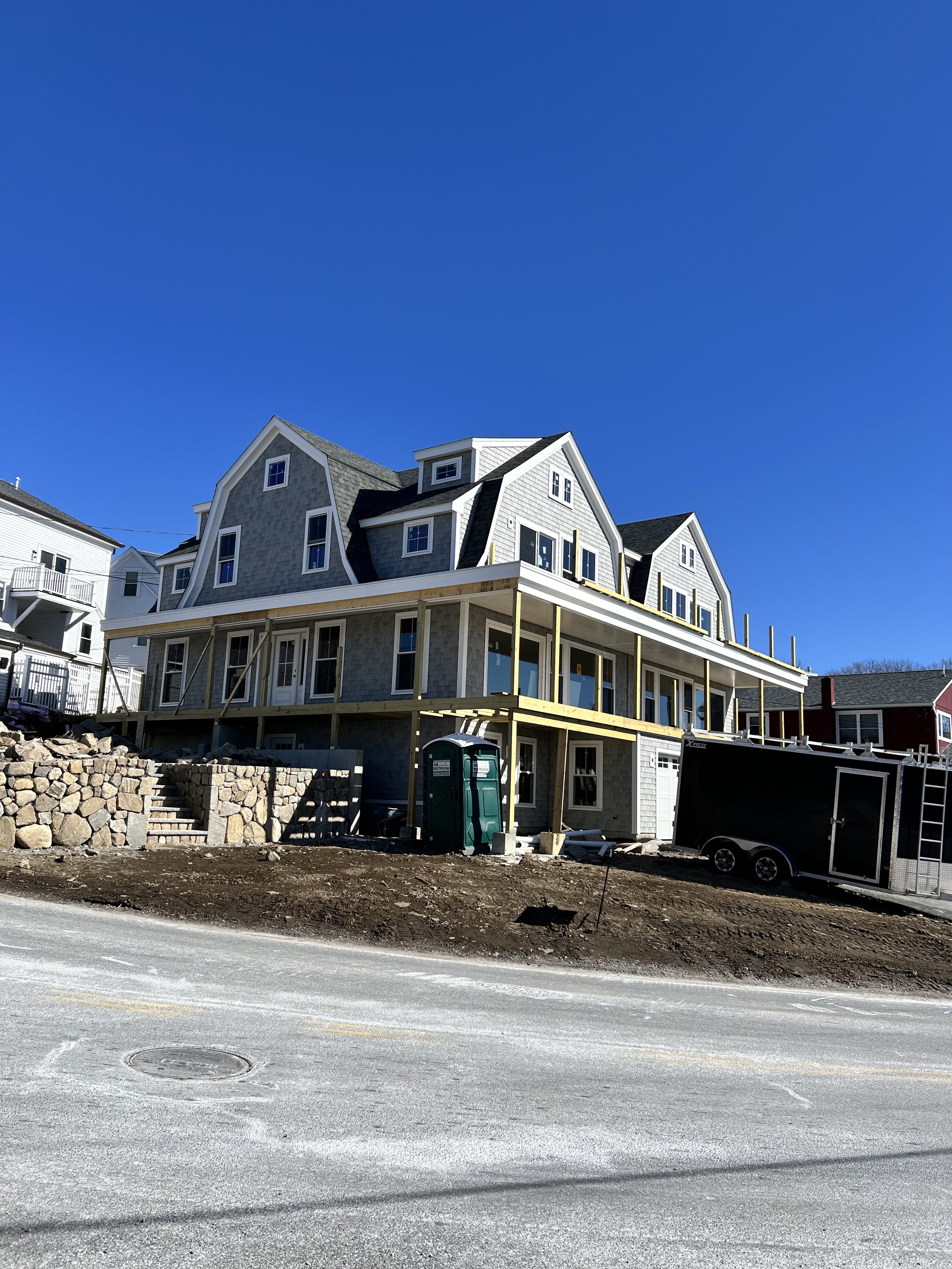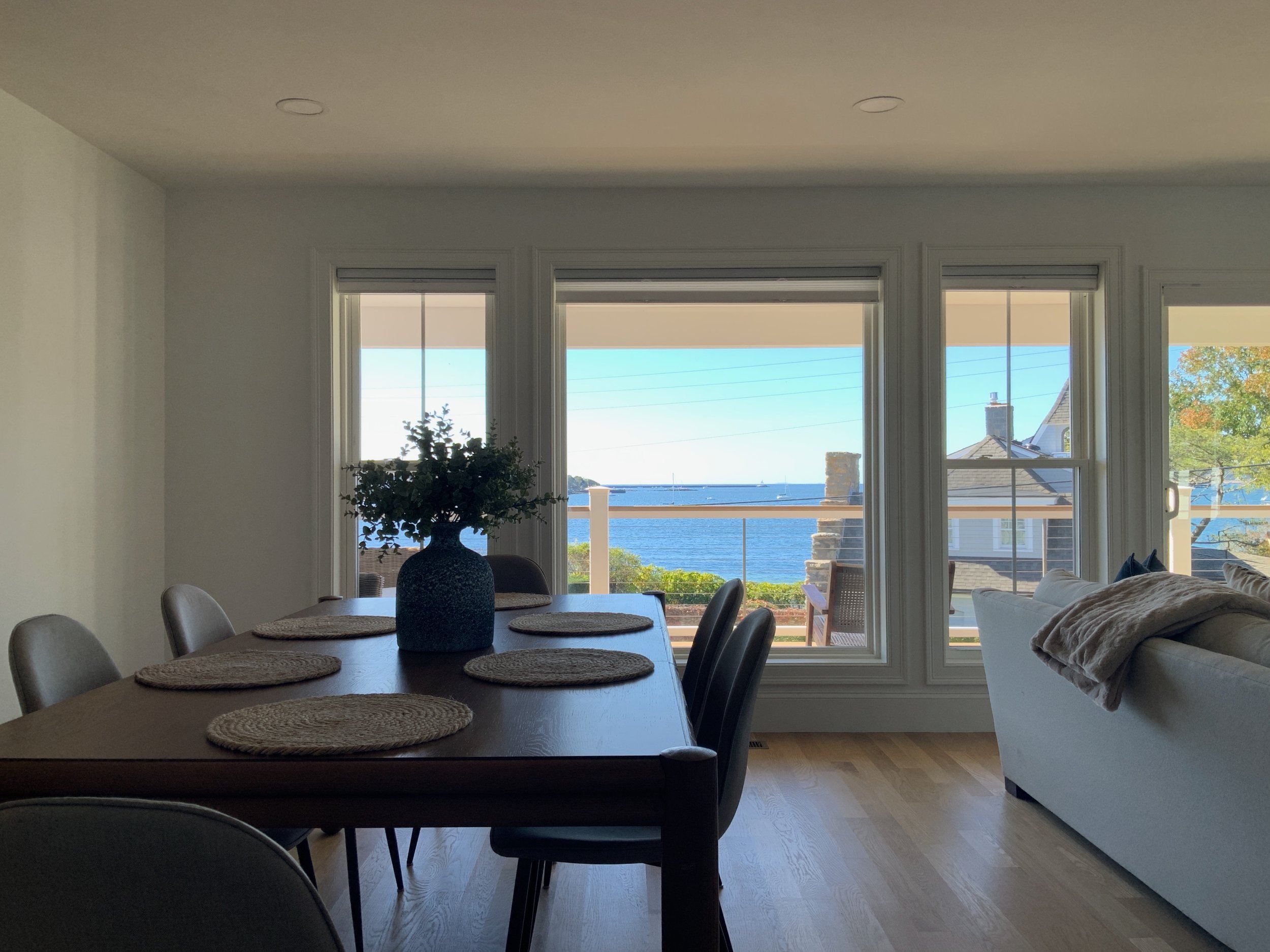Building Coastal Charm: Lessons Learned from Our Project in Gloucester, MA
At MAC Design LLC, each project presents unique challenges and opportunities for growth. Our recent build at 66 Eastern Point Road in Gloucester, Massachusetts, was no exception. This coastal home taught us valuable lessons in adapting to a complex site, working within the community, and finding innovative solutions that honor the home’s surroundings.
Lesson #1: Understanding Site Constraints on Small, Non-Conforming Lots
Designing on a small, non-conforming corner lot posed its own set of challenges. This type of lot often does not meet the zoning bylaws' minimum dimensional regulations, complicating project approval and influencing design placement. Utility connections to surrounding properties added to the complexity by impacting setback requirements.
Takeaway: Navigating non-conforming lots requires a thorough understanding of zoning requirements and their implications on project size and layout. Being familiar with these constraints from the outset allowed us to maximize space while staying within legal boundaries, ensuring a smooth design and approval process.
Lesson #2: Addressing Subterranean Challenges Through Early Site Analysis
The bedrock beneath the site presented another major challenge. Early in the planning process, we conducted a geotechnical review throughout the site to record the subterranean conditions. This review revealed the extent of bedrock that would need to be removed to meet zoning height restrictions and achieve the desired basement grade.
Takeaway: Geotechnical assessments are invaluable in understanding a site’s underground composition. Excavating the bedrock was labor-intensive but essential to ensure that our design complied with height restrictions and structural requirements.
Lesson #3: Engaging the Community Early to Streamline Project Approval
With any residential project, especially on small, high-profile lots, neighborhood concerns can impact the approval process. Engaging with the community early allowed us to address potential concerns, such as site lines, views, and accessibility. These early conversations facilitated transparency, enabled us to discuss project goals with neighbors, and fostered a collaborative spirit.
Takeaway: Neighborhood engagement is critical to navigating complex approval processes. By communicating with neighbors about site lines, potential impacts, and accessibility, we built trust and minimized the likelihood of objections that could lead to costly redesigns. This approach ensures a smoother, more cooperative project journey.
A Vision Realized
The 66 Eastern Point Road project is more than just a beautiful home; it reflects our commitment to creating spaces that honor their surroundings, respect community input, and navigate challenges with innovation and adaptability. The insights gained here will guide us in future builds, reinforcing the importance of early site analysis, zoning knowledge, and proactive community engagement.
As we look back on this project, we are proud of how it integrates seamlessly into the Gloucester landscape, offering a tranquil, light-filled retreat with panoramic ocean views—a true testament to coastal living at its finest.





